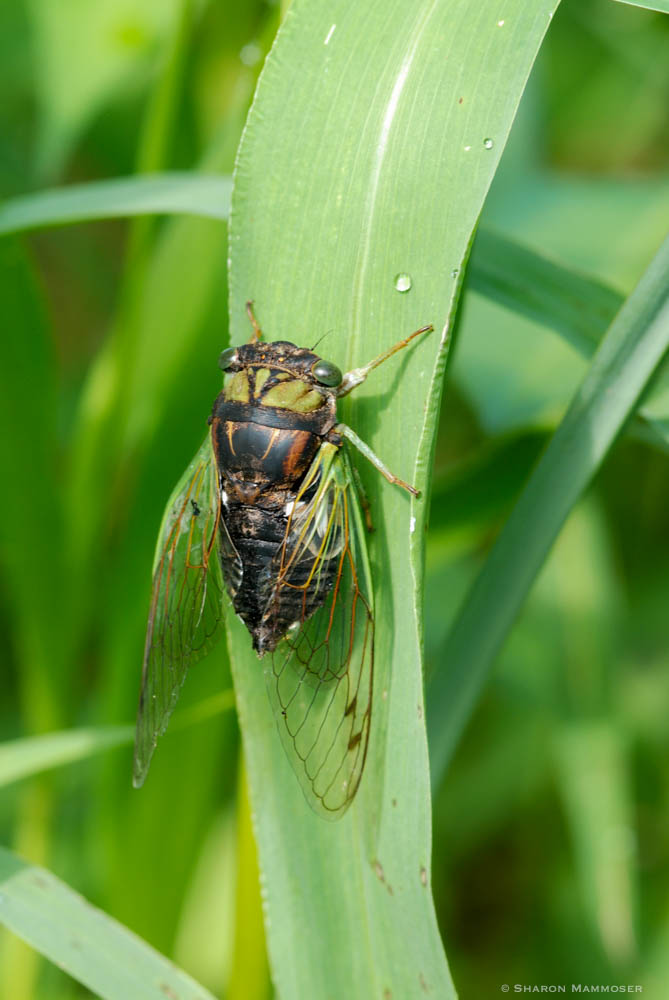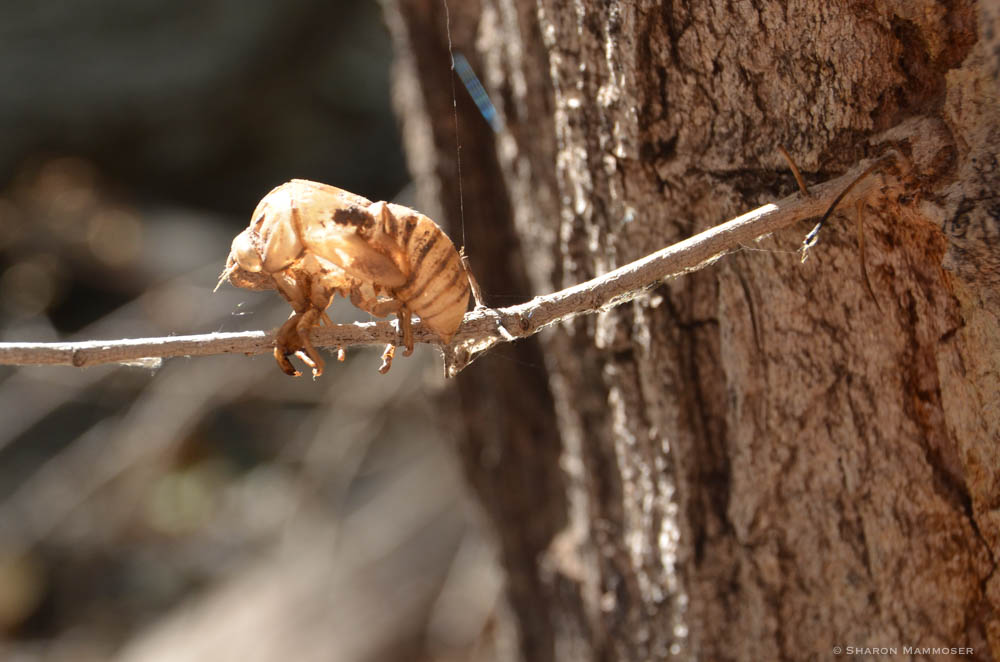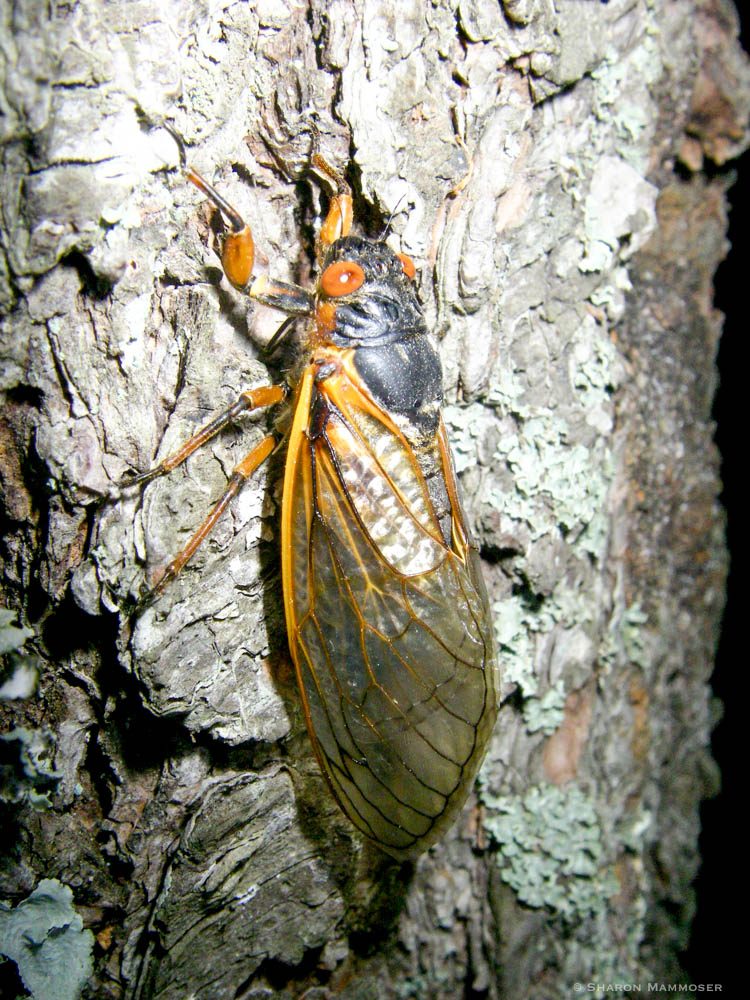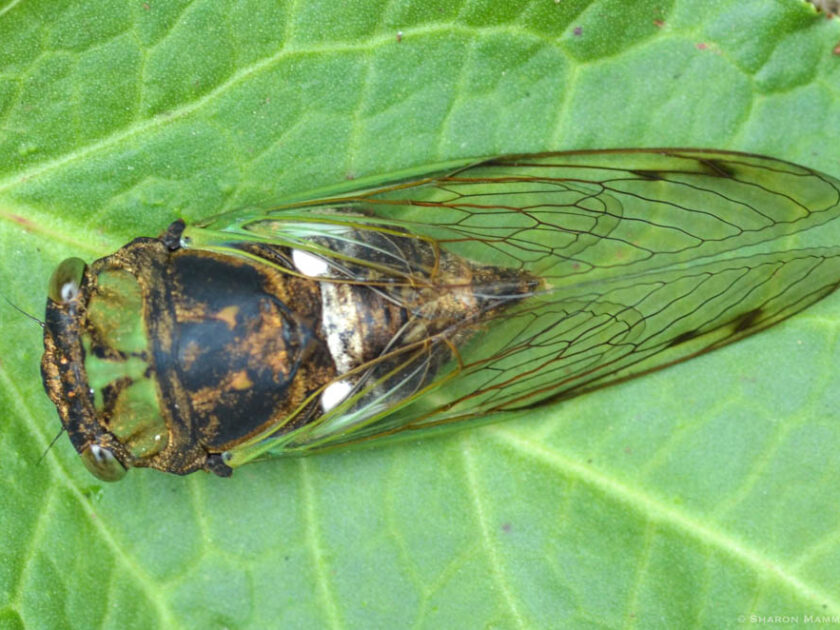There were a few observant people who guessed last week’s puzzler correctly. The lone wing was from an insect called a cicada.

If you don’t already know, cicadas are really cool insects who have a fascinating lifecycle, living much of their life underground, hidden from view. Worldwide there are 3000 species of cicadas and those fall roughly into one of two categories–periodical or annual. Periodical cicadas are the ones that get all of the attention when they are emerging because they do so in large numbers. These periodical cicadas spend either 13 or 17 years underground feeding on the sap of tree roots. Let me just say that again as it is just an amazing fact!! These inch-long insects spend up to 17 years alive, and underground. Then when the temperature and time is right, they emerge and live as adults only a few days. You can read more about this kind of cicadas here, a story from me from my time witnessing a cicada emergence while I was thru-hiking the Appalachian Trail.
I never understand why all of the news channels talk about an emergence of the 17 year cicadas as something bad–using words like invasion, plague, swarm, and other negative words. Instead they should be celebrating the amazing feat of this small critter to have survived for such a long time underground, now ready to transform into winged adults and enter the world where we can see them. It’s truly miraculous! Lots and lots of animals benefit from cicadas, readily feeding on them.
The other kind are often referred to as “dog day cicadas.” These stay underground for 1-9 years with some emerging as adults each summer so that there are always some adult cicadas present in the summer in many part of the United States. Wikipedia states that north of Mexico there are 170 different species of cicadas, most of which are annual, or dog day cicadas.
Cicadas make one of, if not the loudest sound of any insect. They do so by vibrating hollow drum-like organs called tymbals on the sides of their bodies. Of course they are making their songs to attract mates. I featured their song as a puzzler a while back.
Here are a few photos. You can see that even these cicadas look a bit different, depending on the species. The wing from our puzzler is definitely from a dog day cicada but I don’t know which species.




Thanks for reading! I hope you have a wonderful weekend.


